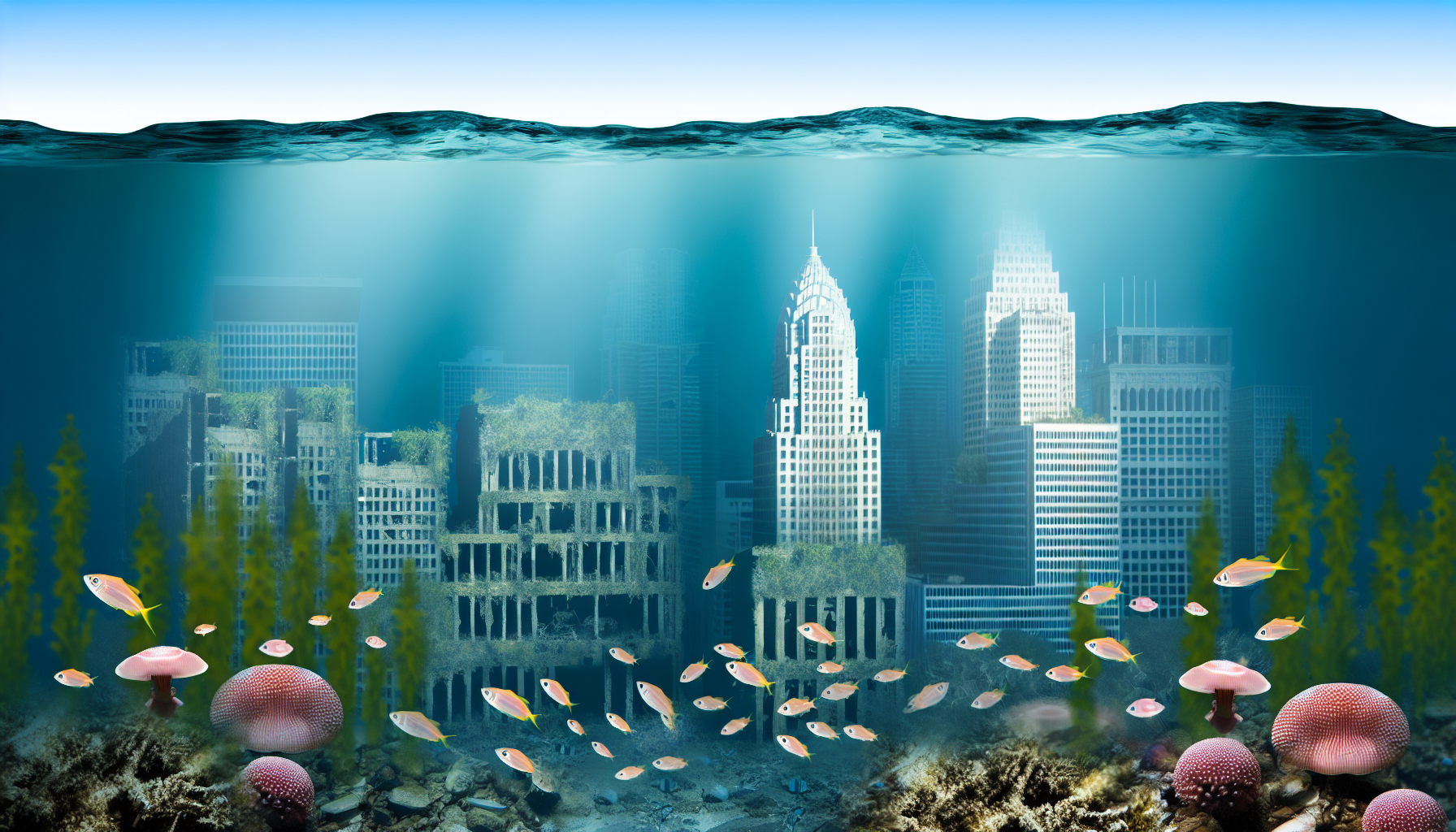The twilight of modern civilization never predicted an Atlantis redux, yet here we are, peering into the abyss to uncover the stories of the world we surrendered to the surge. The Depths Below sends us on a haunting voyage through time’s lens, revealing the eerie beauty of urban landscapes that found their tomb beneath the relentless waves.
In the murky depths, where sunlight fears to tread, lies what was once the throbbing heart of a bustling city. Skyscrapers dethroned by aquatic sovereignty, street signs swinging whimsically in the current, and homes that echo the silence of lives now dissipated. This submerged metropolis, silenced and still, is filled with the whispers of countless memories, each corridor and alley a mausoleum to our environmental hubris.
As our submersibles dive deeper, the unity between human remnants and marine life grows ever more profound. Corals colonize the cold concrete, an iridescent juxtaposition of what was and what has become. Schools of fish dart through hollow windows, unconcerned by the skeletal frames of the once-proud fortifications against the tides. It is nature’s defiance in the face of extinction, a vivid tableau of life’s persistence, yet, a grave reminder of the home we flushed away.
In contrast to our past editorial, Cities Beneath the Tides, where we explored the cultural resilience in adapting to aquatic life, today’s odyssey serves as a stark revelation of downfall. A world where adaptation succumbed to the ultimate narrator – nature’s indomitable narrative.
While examining the relics of our consumerist past, the scintillating wreckage of vehicles now doubles as underwater reefs, the irony of their once carbon-hungry existence is not lost on us. “They served as chariots for civilization’s race to ruin,“ muses the marine archaeologist accompanying us, “and now, they cradle the life that flourishes after our exit.”
The Depths Below speaks not only to our insatiable curiosity but also our intrinsic yearning to remember. We’ve grown accustomed to tales of sustainable floating festivals and silent ceremonies amid the waves, but below us lingers the ghostly evidence of a pathway we once walked. As hauntingly serene as these scenes are, our reflections are shrouded in a cold acknowledgment: the hubris of our legacy is eternally etched into the earth.
The visceral impact of exploring this drowned civilization teeters between awe and sorrow. It’s a dichotomy of admiration for nature’s reclaiming touch and a mourning for what we permitted to be lost. As our expedition draws to a close, we are left with indelible images and a siren’s call to action, to prevent the remaining threads of our world from suffering the same watery fate.
There lies the potential for further expeditions to these briny archives. Are there lessons yet to be learned from the silence of these aquamarine crypts? The probing minds of our time will continue to wander the deep in search of answers. But for now, we surface, with minds as heavy as the waters we leave behind.
